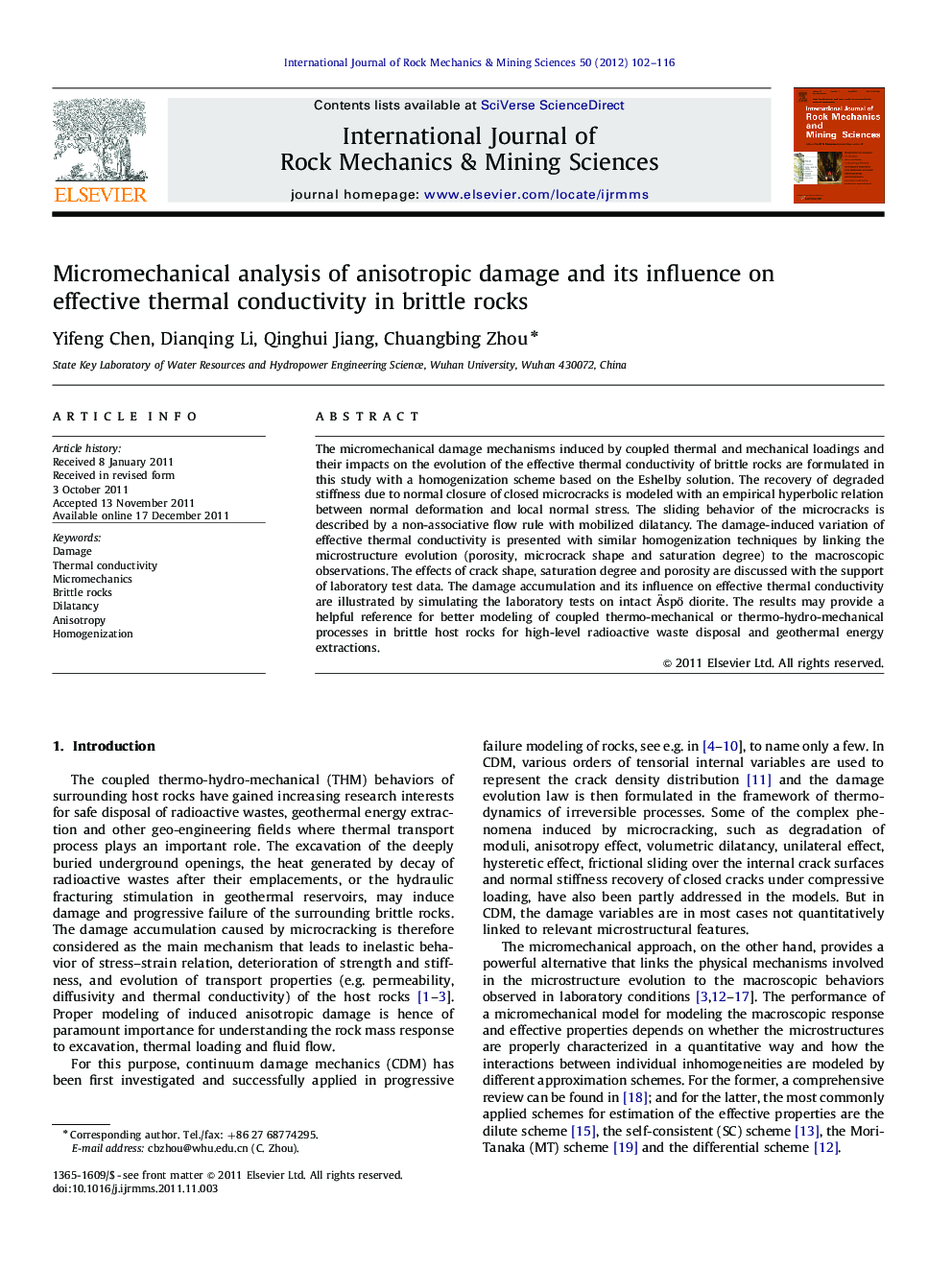| Article ID | Journal | Published Year | Pages | File Type |
|---|---|---|---|---|
| 809663 | International Journal of Rock Mechanics and Mining Sciences | 2012 | 15 Pages |
The micromechanical damage mechanisms induced by coupled thermal and mechanical loadings and their impacts on the evolution of the effective thermal conductivity of brittle rocks are formulated in this study with a homogenization scheme based on the Eshelby solution. The recovery of degraded stiffness due to normal closure of closed microcracks is modeled with an empirical hyperbolic relation between normal deformation and local normal stress. The sliding behavior of the microcracks is described by a non-associative flow rule with mobilized dilatancy. The damage-induced variation of effective thermal conductivity is presented with similar homogenization techniques by linking the microstructure evolution (porosity, microcrack shape and saturation degree) to the macroscopic observations. The effects of crack shape, saturation degree and porosity are discussed with the support of laboratory test data. The damage accumulation and its influence on effective thermal conductivity are illustrated by simulating the laboratory tests on intact Äspö diorite. The results may provide a helpful reference for better modeling of coupled thermo-mechanical or thermo-hydro-mechanical processes in brittle host rocks for high-level radioactive waste disposal and geothermal energy extractions.
► An extended micromechanical damage model was proposed for coupled thermal-mechanical analysis of brittle rocks. ► The recovery of normal stiffness and the mobilized dilatancy behavior of microcracks were incorporated. ► The damage-induced variation of effective thermal conductivity was formulated. ► The proposed model was validated by laboratory tests on Äspö diorite samples.
